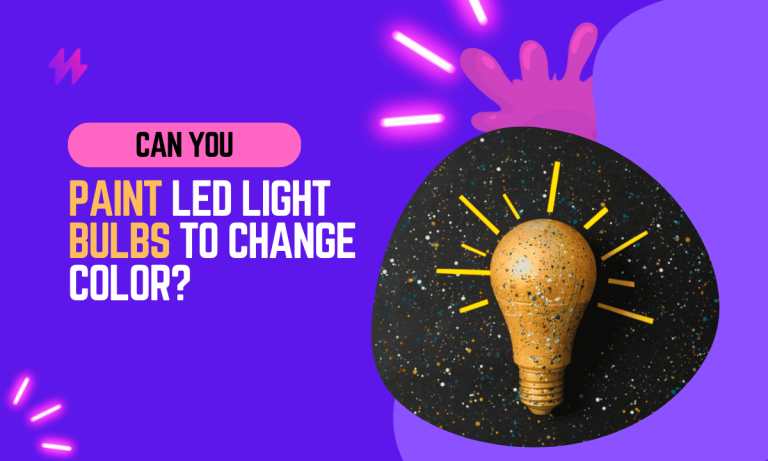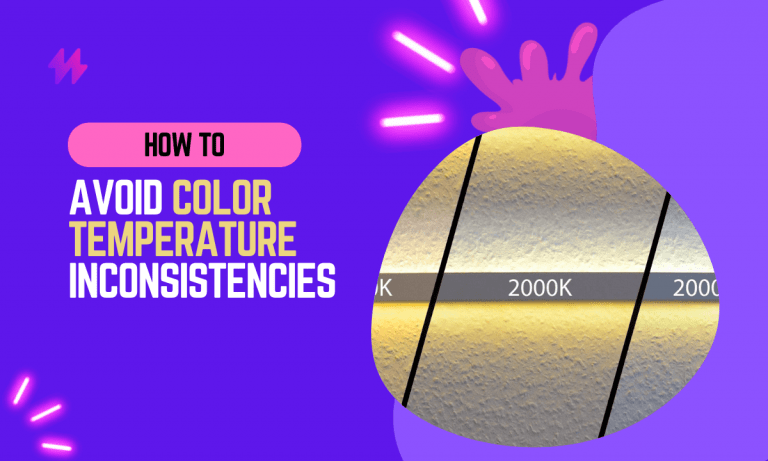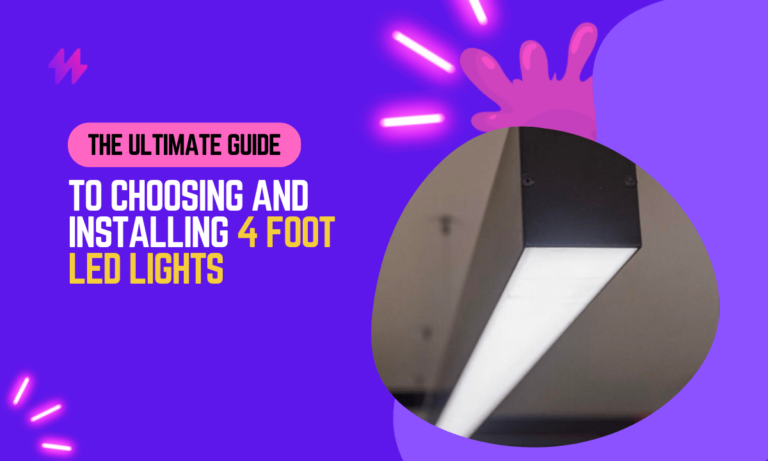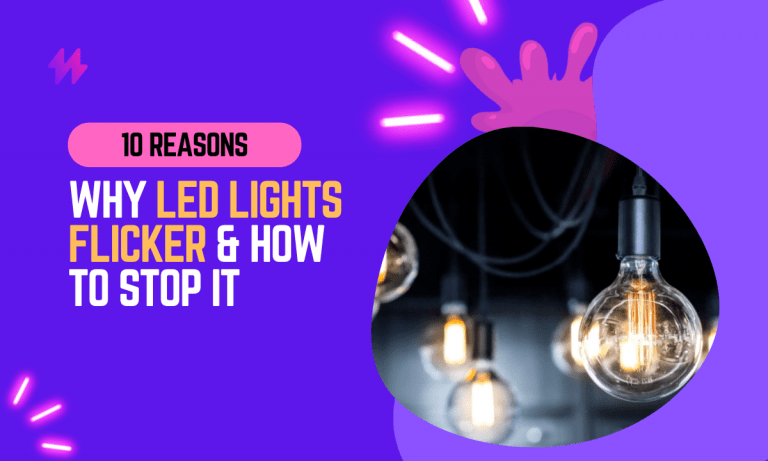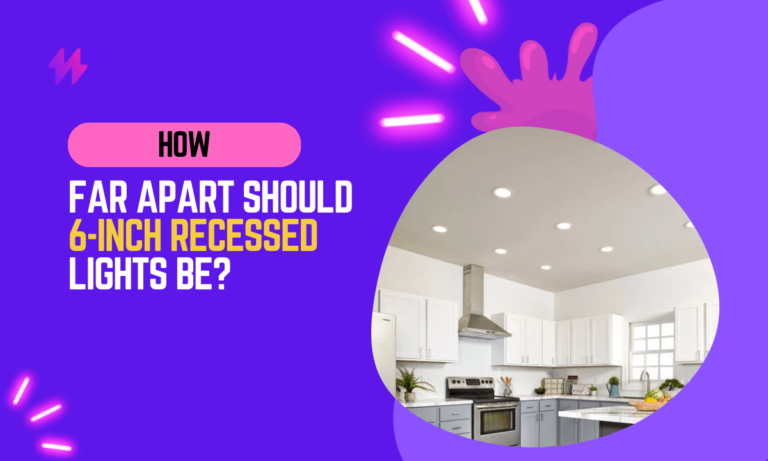Do LED Lights Attract Bugs in 2023?
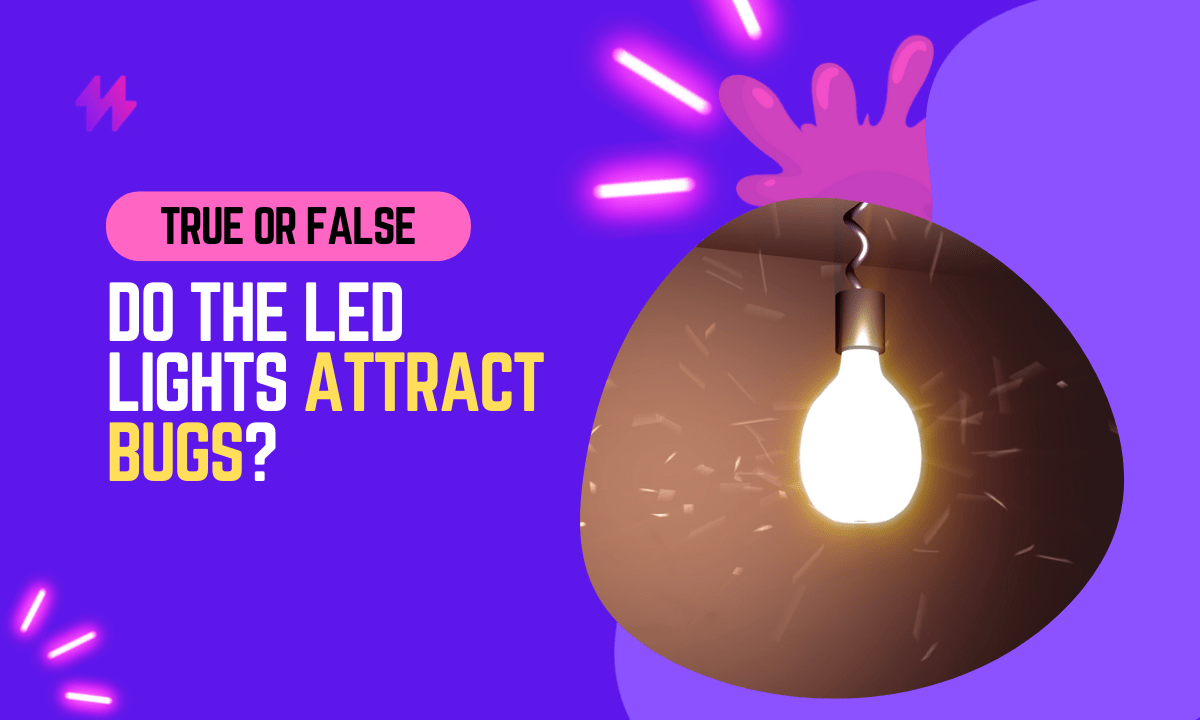
It’s a question that has been asked for years, with no definitive answer. Some people swear that LED lights attract more bugs than other types of light bulbs, while others say there is no difference. So what’s the truth? Do LED lights attract bugs? Let’s take a closer look at this topic to find out.
Do LED lights attract bugs? Are they worse for insects than traditional incandescent bulbs? How can you keep these pests away from your home and still have outdoor lighting?
See below for the answers to these questions! By better understanding the science, you’ll be able to make an informed decision about which LED lights are best for your home.
Have you ever wondered why bugs are attracted to light?
There are a few reasons for this. First of all, many insects are nocturnal, so they are attracted to light because it means they can extend their activity time. In addition, some bugs use light as a way to orient themselves. For example, fireflies use light to communicate with mates.
However, the main reason that most bugs are attracted to light is that they mistake it for the moon at night. This is especially true for moths, who use the sun to navigate. When they see a bright light, they think it is the sun/moon and fly toward it. Unfortunately, this often leads them into danger, as they can end up flying into windows or being eaten by predators.
If given a choice, bugs would actually use moonlight to travel and navigate their path. However, with so many lights in the streets, in people’s homes, and in other areas that bugs may seem – like lightbulbs – they get confused about where they’re supposed to go. They end up going toward these lights because they think the artificial light is coming from the moon.
Furthermore, bugs are most attracted to lights during colder weather seasons. They can only be drawn in by the light if it is easily visible to them; otherwise, the artificial light won’t look anything like the natural moonlight they’re used to. Even if you have a dimmer lightbulb, insects likely wouldn’t take notice of it.
Bulbs emitting shorter wavelengths attract more bugs because they imitate moonlight. These are generally going to be the bulbs that are a very cool white or even blue-tinted color. Bug see bulbs better when they are yellow, orange, or red-tinted and emit longer wavelengths.
Do LED Lights Attract Bugs?
Now that we know a little more about why bugs are attracted to light, let’s talk about LED lights. Do LED lights attract bugs?
The answer is: it depends. Some people say that LED lights do attract more bugs than other types of light bulbs, while others say there is no difference. So what’s the truth? Do LED lights really attract bugs? Let’s take a closer look at this topic to find out.
What type of lightbulb emits shorter wavelengths? As we mentioned before, shorter wavelengths generally attract more bugs because they imitate moonlight. These are generally going to be the bulbs that are a very cool white or even blue-tinted color.
Although LED lights are usually cooler than other types of lightbulbs, they still emit a bright light that bugs are attracted to.
Not only this, but LED lights also don’t give off ultraviolet light, which is another thing that attracts bugs. In fact, many insects are drawn to black UV lights.
If you pick an LED light that has a longer wavelength (as we talked about earlier), you won’t have to face these problems. If you pick LED lights with shorter wavelengths, then there is a high chance that they’ll attract more bugs near your LED bulbs which will further attract spiders.
While no light spectrum will completely keep bugs at bay, certain spectrums are more effective than others. If you’re looking to minimize the number of insects attracted to your space, go for bulbs with longer wavelength light.
LED vs Incandescent Light Bulbs: Which Is Worse for Bugs?
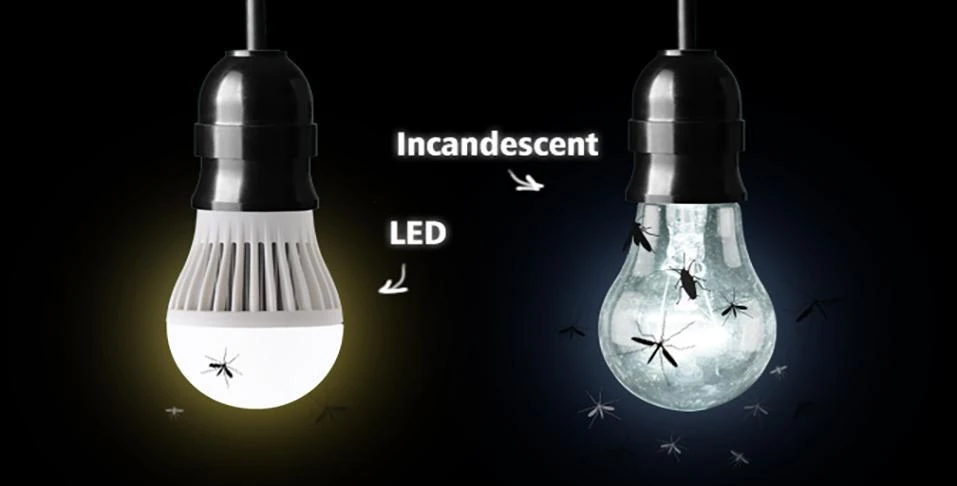
So, we’ve established that LED lights can attract bugs – but what about incandescent light bulbs? Do they also attract insects?
The answer is yes. In fact, most lightbulbs – not just LEDs – will attract some bugs.
Contrary to popular belief, bugs are not actually attracted to all lightbulbs equally. They care about the color and heat of the light more than anything else. If you want bulbs that will attract fewer bugs, focus on those with a cooler temperature and softer colors on the spectrum.
The easiest way to determine which colored light bulb to use is by understanding what type of bugs are in your area and what colors they’re attracted to most.
If you don’t have the time to do that sort of research, follow our previous suggestion: bulbs with longer wavelengths will result in fewer bugs. As incandescent light bulbs produce more heat, bugs are naturally attracted to them. LED bulbs produce less heat, so bugs are less attracted to them.
How Can LED Lights Help to Get Rid of Bugs?
As we’ve seen, LED lights can actually attract bugs – but there are still some ways you can use them to get rid of insects.
One way is to use a bug zapper. Bug zappers usually come with an ultraviolet light that attracts bugs, which then get electrocuted when they touch the metal grid. If you’re using an LED bug zapper, make sure that the light is not too bright. A dim light will be less noticeable to bugs and won’t attract as many of them.
Another way to use LEDs to get rid of bugs is by using them in conjunction with other pest control methods. For example, you could use LED lights to attract bugs and then trap them in a jar or container.
Or, you could use LED lights to keep bugs away from certain areas of your home. If you have a garden or patio that you don’t want insects to bother, try setting up some LED lights around the perimeter. The light will deter bugs from entering the area and bothering you while you’re trying to enjoy the outdoors.
You may also like: Understand the difference between 3000K vs 2700K Lighting
Final Words
In conclusion, the question of whether LED lights attract bugs is particularly relevant as environmental considerations become increasingly important in 2023. LED lights are known for their energy efficiency and lower heat emission compared to traditional lighting solutions, which inherently reduces their attractiveness to insects that are drawn to heat and certain light wavelengths. Studies have shown that LEDs emitting light in the cooler, bluer spectrum tend to attract more insects than those emitting warmer colors like yellow and red. This is due to the fact that many insects are more sensitive to ultraviolet light and the blue end of the light spectrum. Therefore, selecting LEDs that emit light in the warmer color temperatures can help minimize the presence of bugs around these light sources.
Furthermore, as we continue to seek more environmentally friendly living solutions, the choice of lighting can play a significant role in reducing our impact on local ecosystems. By opting for LED lights that are tailored to emit minimal UV light, not only do we reduce energy consumption, but we also decrease the disturbance to nocturnal wildlife, which can be disoriented by artificial lights. For homeowners and urban planners, this means considering the implementation of bug-friendly lighting options in outdoor areas to maintain ecological balance while providing necessary illumination. This approach not only contributes to environmental conservation efforts but also enhances comfort by reducing the annoyance and potential health risks posed by insects attracted to light. Therefore, understanding the specific properties of LED lighting and choosing products wisely can lead to a harmonious balance between human needs and environmental stewardship.

